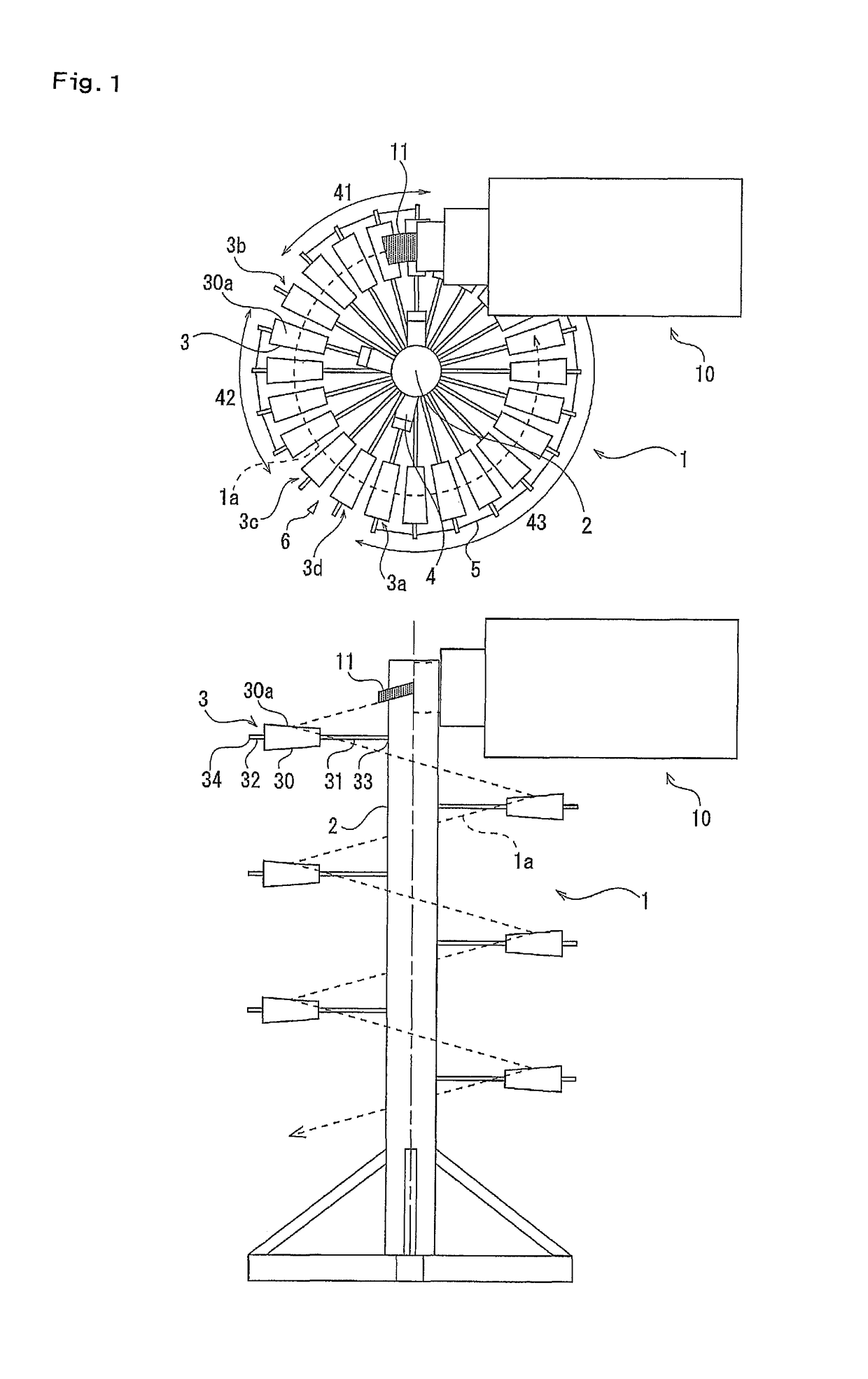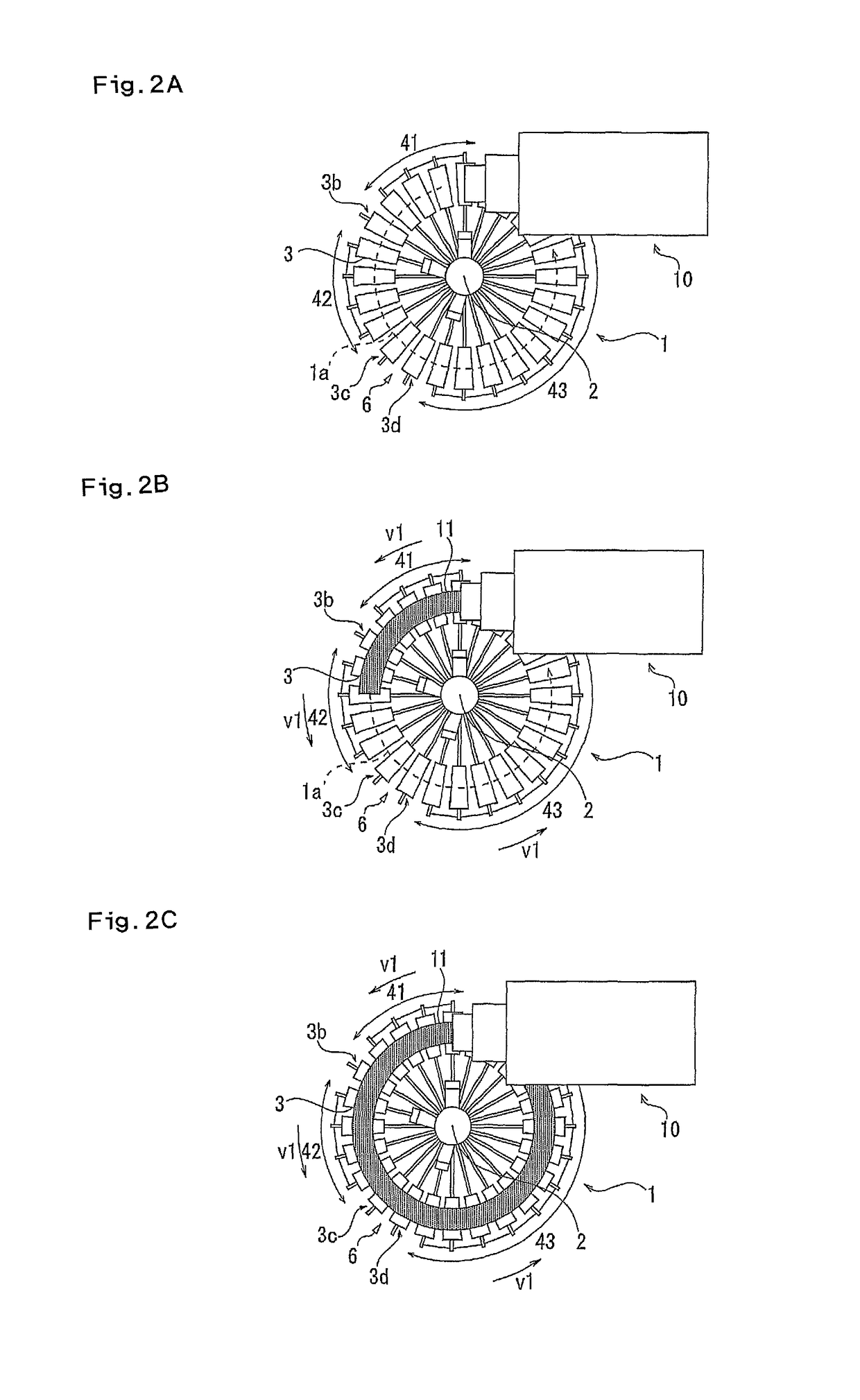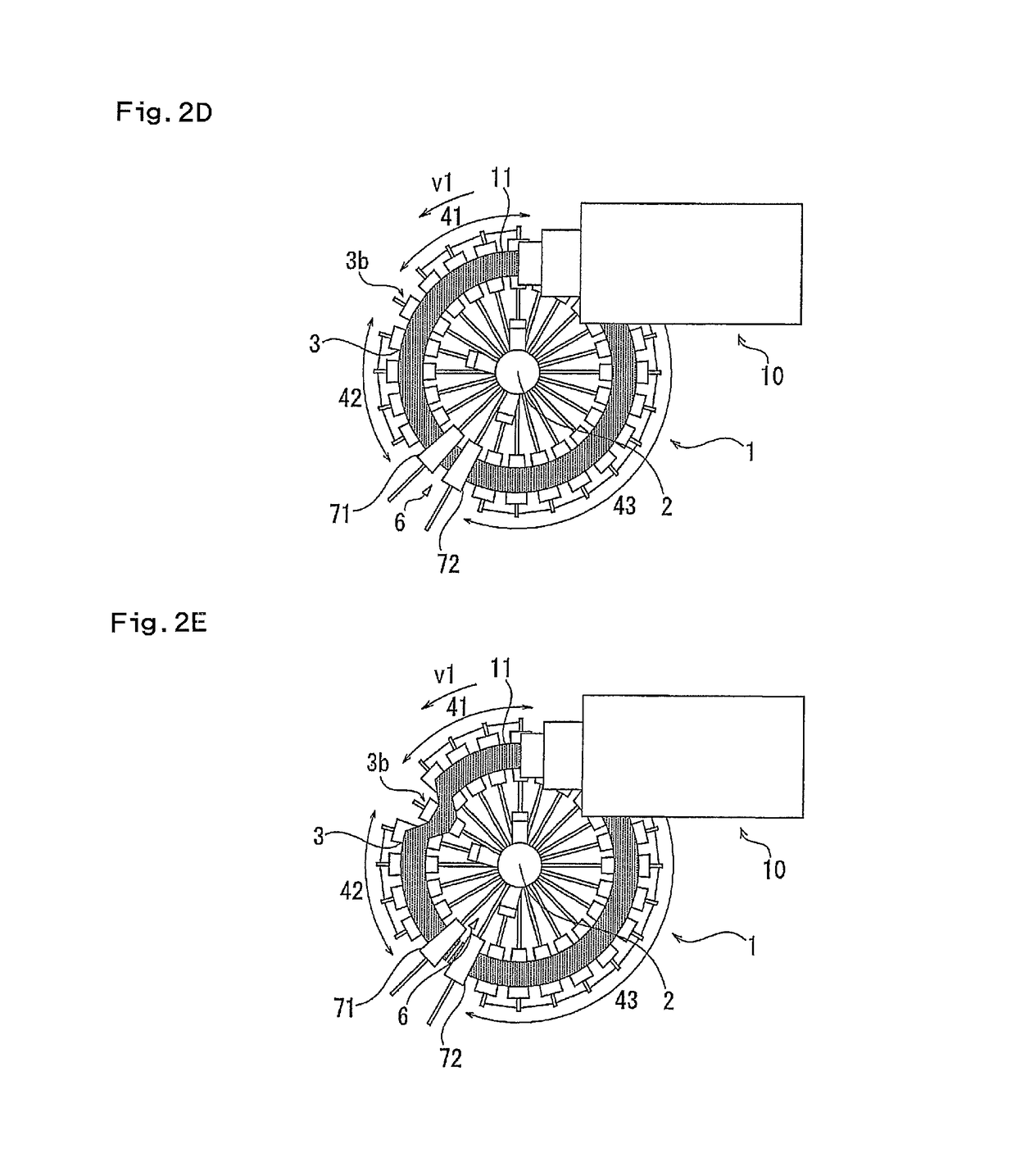Conveying device
a technology of conveying device and rubber member, which is applied in the direction of transportation and packaging, metal working apparatus, and other domestic objects, can solve the problems of generating cut rubber, difficult to convey extruded bead filler to a molding machine while maintaining its curvature, and extremely difficult to form bead filler while forming, so as to achieve accurate cutting of rubber members
- Summary
- Abstract
- Description
- Claims
- Application Information
AI Technical Summary
Benefits of technology
Problems solved by technology
Method used
Image
Examples
Embodiment Construction
[0034]Embodiments of the present invention will be described below with reference to the drawings. FIG. 1 is a plan view and a front view showing an entire conveying device. A conveying device 1 of the present invention is for conveying a rubber member 11 extruded in a curved state from an extrusion device 10.
[0035]The extrusion device 10 only needs to extrude the rubber member 11 in the curved state, and various types of extrusion devices can be employed. Examples of the extrusion device 10 include: an extrusion device (device described in JP 2007-237596 A) in which a gear pump which sends out rubber extruded from an extrusion machine to a molding base is configured by a helical gear, and a rubber member extruded from the molding base is curved; an extrusion device (device described in JP 2008-246880 A) in which lengths of a pair of opposed lands in a molding base are made different from each other, thereby curving a rubber member which is extruded from the molding base; and an ext...
PUM
| Property | Measurement | Unit |
|---|---|---|
| outer diameter | aaaaa | aaaaa |
| speed | aaaaa | aaaaa |
| conveying speed | aaaaa | aaaaa |
Abstract
Description
Claims
Application Information
 Login to View More
Login to View More - R&D
- Intellectual Property
- Life Sciences
- Materials
- Tech Scout
- Unparalleled Data Quality
- Higher Quality Content
- 60% Fewer Hallucinations
Browse by: Latest US Patents, China's latest patents, Technical Efficacy Thesaurus, Application Domain, Technology Topic, Popular Technical Reports.
© 2025 PatSnap. All rights reserved.Legal|Privacy policy|Modern Slavery Act Transparency Statement|Sitemap|About US| Contact US: help@patsnap.com



